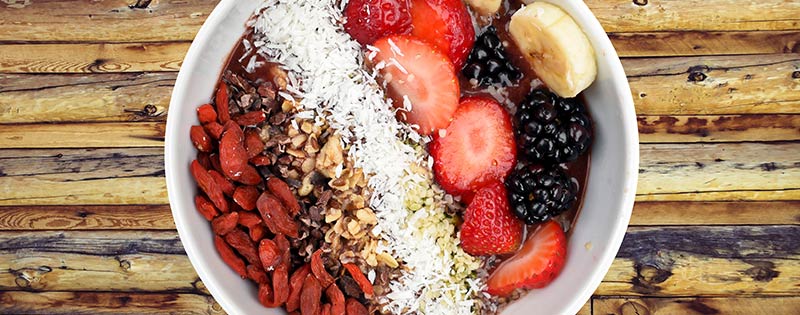by Brent Hearn •
I should really get more fiber. I should really get more fiber. I should really get more fiber…
Does this sound like something you’ve ever said to yourself? If so, there’s a good chance that something, shall we say, “less than fun” was happening at the time. As far as mantras go, it’s not really moving. But then again, neither were you when you were repeating it. Hey-o!
All joking aside—for the moment, anyway—fiber doesn’t often get its due. It’s the butt end of far too many jokes, and all too often even the most well-intentioned pooh-pooh its importance to overall wellness. (Okay, so now we’re done with the jokes.)
What exactly is fiber? Why do we need it? And what can we eat to get more of it? Well, let’s address all of those questions one at a time, shall we?
What is it?
Fiber is a specific type of carbohydrate that your body can’t digest. Unlike other carbohydrates, it can’t be broken down into sugar; it just passes right on through ye olde digestive tract.
There are two types of fiber: soluble and insoluble. Soluble fiber dissolves in water and is responsible for helping to make you feel full, as well as regulating blood sugar and cholesterol levels. Insoluble fiber increases the bulk of the stool and “keeps things moving.”
Why do we need it?
Fiber is important for a number of reasons:
- It helps to regulate hunger.
Foods high in fiber tend to be more filling and less energy-dense (which is a fancy-schmancy, sciency-y way of saying they have fewer calories by volume).
- It helps you maintain a healthy weight.
Since it helps to keep your hunger in check, you’re less likely to feel the urge to demolish that family-size bag of chips or go to town on that pint of ice cream.
- It offers a host of other health benefits.
Fiber promotes gut health and immunity and can help fight inflammation. Adequate fiber consumption is linked with a reduced risk of cardiovascular disease, stroke, some types of cancers, hypertension, and type 2 diabetes.
How can we get more of it?
- Opt for Fruit Instead of Fruit Juice.
Sure, fruit juice is tasty. But it tends to be higher in calories, and you miss out on all the extra fiber and the feeling of fullness said fiber can provide, which can curb those pesky cravings
- All Aboard the Veggie Train
Ease up on all those snacks that are low in fiber and high in calories (chips, candy bars, etc.) Opt for raw vegetables instead.
- Next Stop: Bean Town
Beans, beans, good for your heart—the more you eat ‘em, the more you…realize this rhyme isn’t appropriate for a health blog. Beans and other legumes are great for more than your heart; they’re also a great source of fiber!
- Grains? Eat ‘Em Whole!
Replace your white rice, bread, and pasta with the whole wheat versions. Choose cereals with whole wheat listed as the first ingredient.
In short? Fiber is just good for you. Increasing your intake now may save you a lot of money and suffering down the road. And who knows? It may even save your life.
Sources:
https://www.hsph.harvard.edu/nutritionsource/carbohydrates/fiber/









 ▶︎
▶︎  Why is the Discount Challenge prize amount $15,024? Because that is the average “per-occurrence” fine for Medicare inducements. That’s not $15,024 per patient, that’s not per provider, that’s PER VISIT. Stinks, doesn’t it? To us, the prize amount is worth the investment if we can help our profession better understand proper discounting.
Why is the Discount Challenge prize amount $15,024? Because that is the average “per-occurrence” fine for Medicare inducements. That’s not $15,024 per patient, that’s not per provider, that’s PER VISIT. Stinks, doesn’t it? To us, the prize amount is worth the investment if we can help our profession better understand proper discounting.